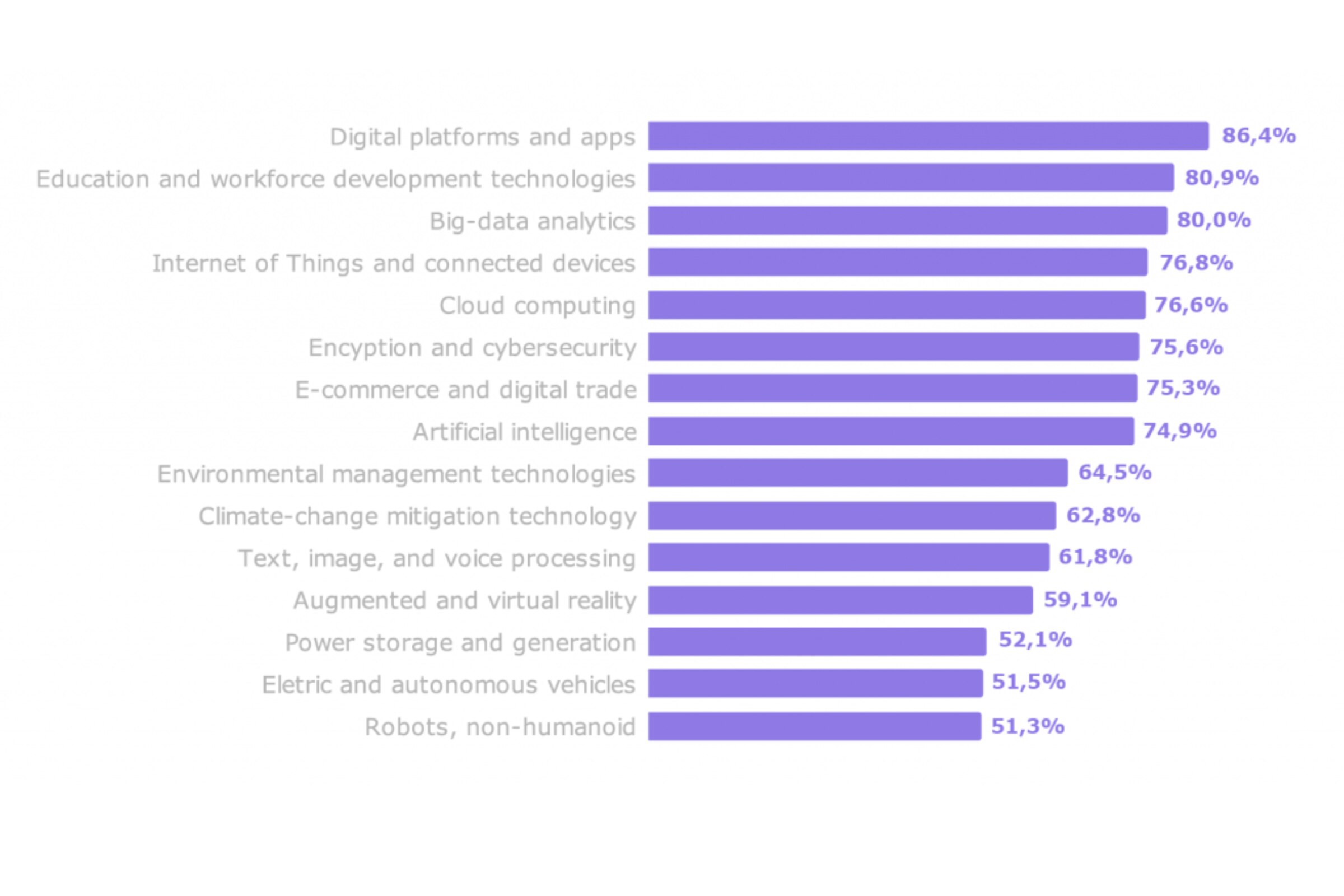We are in the midst of an unprecedented labor revolution. Most jobs of the future do not exist today. This raises important questions: Will we only work three days a week? What will offices be like by 2030? Will remote work continue?
70% of the jobs most in demand in the future do not yet exist. Artificial intelligence (AI) and robotics will impact more than 46% of current jobs. The average number of jobs that a person will have in the future will be between 7 and 10.5, working days could be three or four days per week and offices will have to reinvent themselves for new needs.
Will artificial intelligence put an end to work?
AI and robotization are undoubtedly a new revolution in the workplace. The Organization for Economic Cooperation and Development (OECD) forecasts that 14% of jobs could cease to exist and another 32% could be seriously affected.
However, this does not mean that millions of people will be left without jobs or income. Instead, the future suggests that AI and robotization will manage the most automatic and repetitive processes, leading to the creation of new jobs. In fact, according to the World Economic Forum, around 23% of jobs will change between now and 2027, with the creation of 69 million new jobs and the loss of around 83 million.
For investors, these changes in the future also offer an opportunity. According to Statista's data, the market value of artificial intelligence could exceed the $300 billion barrier in 2025 and one trillion dollars in 2029. This means that the market could see its current value increase up to ten-fold by the end of this decade.
Dynamism and fewer hours worked
According to World Economic Forum forecasts, between 75% and 85% of the jobs that will be most in demand do not yet exist. And among the professions that are emerging are experts in the Internet of Things (IoT), big data and AI; water harvesters; drone pilots and air traffic controllers; cryptocurrency managers; 3D printers or smart carriers, according to the National Reference Center for E-Commerce and Digital Marketing.
Another aspect to take into account when talking about the future of employment is dynamism, which will require employees prepared to live with change and constant training. In fact, in its Working in 2033 report, the consultancy PwC stated that the notion of working one’s whole life in one job in the same company is experiencing significant changes, and it is expected to continue to evolve further. Moreover, its experts estimate that we might have between 7 and 10.5 jobs on average throughout our working life.
Another criterion that could vary in the coming years is in the hours worked. Today, some countries are considering reducing the number of working days a week from 5 to 4, and changing from 40 to 37.5 hours a week. In this regard, two business leaders (Bill Gates and Elon Musk) have also warned of a future with fewer days worked. For Microsoft's creator, AI would mean less work. Meanwhile, Tesla's CEO went further by pointing out that working will be optional. “Working in the future will be optional. A universal high income will need to be introduced, and it might be destructive for humanity. One of the challenges might be to see how we find meaning in life”, he said.
50 years growing at your side
Our team of high-net-worth experts offers its extensive experience in advising and designing sophisticated strategies tailored to your needs and values.
The smart office and remote working
Remote working was a mandatory rule due to the 2020 pandemic, after which people seem to have returned to the office. In fact, according to the KPMG CEO report, 78% of executive directors of the biggest companies in Spain believe that the in-person working model will have fully recovered within three years. The truth is that it is the only trend that seems less clear. Although there are studies to suit all tastes. The latter establishes that working from home is allowing professionals to perform better, but it is obstructing innovation. A huge report published in Nature –which analyzes 20 million scientific studies and 4 million patent applications– attests to this: remote work can be more productive, but collaboration in person produces more progress than working from home.
Meanwhile, the workplace of the future, according to the international consultancy firm JLL, will change and move towards smart offices with interconnected technological devices to improve productivity and working conditions, to simplify some daily tasks that can take up time at work. In addition, as for the workplace itself, it will be equipped with sensors “to maintain a humidity level between 45 and 65% or to keep the temperature at 21°C”, and will be ergonomically tailored to worker postures.
In this scenario, the office real estate investor sector has been affected. Companies are now looking for smaller and more flexible spaces that favor the hybrid model. According to the Office Occupancy 2023 report, published by the real estate consultancy CBRE, operations with more than 2,500 m2 of office space have been reduced much more than those with less space. However, investment forecasts improve if we talk about the coworking model.
Ranking of technologies likely to be adapted by companies between 2023 and 2027


